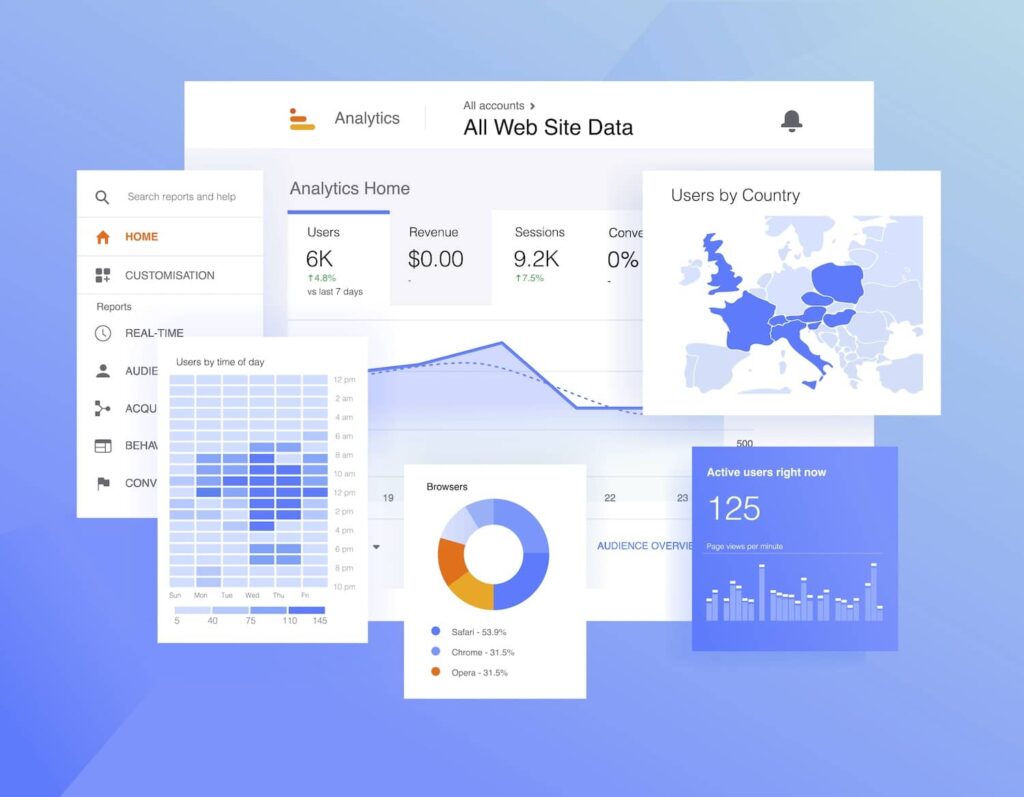Maximizing Your Information Analysis With Secondary Dimension in Google Analytics for Informed Decision-Making
In the world of digital analytics, the ability to essence meaningful understandings from data is vital for making educated choices that drive organization success. Google Analytics, an effective device in the hands of digital marketers and experts, supplies a feature known as Second Dimension. This often-underutilized feature has the potential to reveal a wide range of details that can give a deeper understanding of individual behavior and website performance. By using the capabilities of Additional Dimension, individuals can gain an extra extensive sight of their information, allowing them to make critical choices based upon a more nuanced and detailed evaluation.
Recognizing Secondary Measurement Performance
Comprehending the second measurement capability in Google Analytics boosts the deepness of data analysis by providing additional context to primary metrics. By integrating a second measurement, experts can sector and contrast data, obtaining insights that would certainly otherwise stay concealed. This feature allows individuals to watch data via different lenses, such as the resource of traffic, individual actions, or geographical area, supplying a more thorough understanding of web site efficiency.
Utilizing second dimensions can disclose patterns and relationships that may not be noticeable when looking entirely at key metrics. For example, matching the primary metric of page sights with a second dimension like tool group can discover whether specific tools drive more website traffic to particular pages. This details can then notify website optimization methods tailored to various gadget users.
Executing Additional Dimension in Reports
Structure upon the understandings obtained through second dimension evaluation, including these dimensions effectively into reports in Google Analytics is essential for drawing out actionable data-driven decisions. what is a secondary dimension in google analytics. By carrying out second dimensions in records, users can dive much deeper right into the efficiency metrics of their internet site or app. This feature permits a more detailed evaluation by supplying extra context to the key dimension chosen
To execute a second measurement in records, simply browse to the wanted report in Google Analytics and click the "Secondary measurement" tab located over the information table. From there, users can choose from a vast array of additional dimensions such as 'Source/Medium', 'Device Category', or 'Touchdown Web page'. Picking the most relevant secondary measurement will certainly rely on the details understandings you are seeking to reveal.
Utilizing second measurements in reports not only boosts the deepness of evaluation yet likewise help in determining trends, patterns, and connections that might have or else gone unnoticed. This critical technique to information analysis makes it possible for companies to make enlightened choices that drive development and success.

Analyzing Data With Secondary Dimensions
Upon incorporating secondary dimensions right into data analysis within Google Analytics, a thorough exam of crucial performance indications can be attained, offering important understandings for tactical decision-making. By using additional measurements, analysts can better dissect their key data measurements, such as traffic resources or individual demographics, to discover patterns or fads that might not be right away evident. This much deeper level of analysis enables for a much more comprehensive understanding of individual habits and interactions on a website or electronic platform.
Assessing data with second measurements allows marketing professionals and website owners to answer even more specific questions concerning their audience, content efficiency, and advertising and marketing efforts. By incorporating the main dimension of website traffic resources with a secondary measurement like geographical location, organizations can recognize which areas drive the most useful web traffic to their website. This kind of granular understanding can educate marketing methods, material development, and website optimization initiatives to much better accommodate the demands and preferences of their target market.
Leveraging Second Measurements for Insights
By integrating second measurements properly, experts can extract much deeper understandings from data sets in Google Analytics, improving the understanding have a peek at this website of user habits and efficiency metrics. Leveraging secondary measurements includes incorporating different attributes or metrics with primary information to discover patterns and patterns that might not be noticeable at initial glance. For circumstances, by adding an additional measurement such as 'Tool Category' to a report on website web traffic, experts can recognize whether user behavior differs across different devices like desktop computers, cellphones, or tablet computers.
Moreover, utilizing additional dimensions permits analysts to sector information a lot more granularly, allowing them to determine specific target market sections or geographical places that display distinctive actions. what is a secondary dimension in google analytics. This segmentation can be crucial in tailoring advertising and marketing strategies, optimizing website web content, or enhancing user experience based on the special qualities of each section
Essentially, leveraging additional measurements in Google Analytics empowers analysts to dive much deeper right into information, acquire meaningful insights, and make notified choices that drive organization growth and success.
Enhancing Decision-Making Via Additional Measurements
Making use of additional measurements in data analysis provides a strategic benefit by uncovering workable insights that drive notified decision-making in Google Analytics. By improving decision-making through secondary dimensions, individuals can dig deeper right into their data to remove useful details that might not be quickly evident. These additional measurements provide a more detailed view of user habits, interactions, and results, making it possible for experts to make even more educated choices based upon concrete information.
Via the usage of second measurements, experts can sector and filter information to identify patterns, trends, and connections that might influence decision-making processes. This improved level of granularity like this enables a much more targeted strategy to assessing data, causing even more exact and insightful final thoughts.
Additionally, additional dimensions offer the possibility to compare various data factors alongside, facilitating a more extensive assessment of performance metrics and KPIs. By leveraging additional measurements efficiently, services can enhance their techniques, enhance customer experiences, and eventually accomplish their objectives with self-confidence.
Verdict

Building upon the insights obtained with secondary measurement evaluation, integrating these measurements properly into records in Google Analytics is critical for removing actionable data-driven decisions.To carry out a second dimension in reports, simply browse to the desired these details report in Google Analytics and click on the "Secondary measurement" tab located above the information table. By using additional dimensions, experts can better study their primary information measurements, such as website traffic resources or user demographics, to uncover patterns or patterns that may not be instantly evident. By combining the key measurement of web traffic resources with an additional measurement like geographical place, services can recognize which areas drive the most important web traffic to their website.By incorporating additional dimensions efficiently, analysts can draw out deeper insights from information collections in Google Analytics, boosting the understanding of individual behavior and performance metrics.
Comments on “Opening Secondary Dimensions in Google Analytics: Meaning and Practical Use Cases Checked Out”